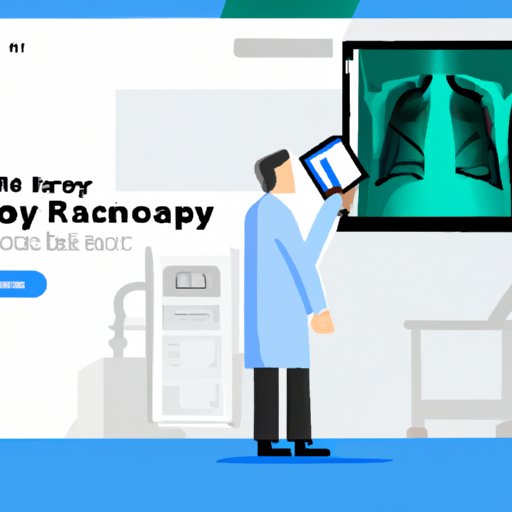
Introduction
Becoming an X-ray technician is a rewarding career path that allows individuals to make a meaningful contribution to the healthcare industry. If you’re interested in pursuing a career as an X-ray tech, you may be wondering what it takes to land a job in the field.
Step-by-Step Guide
First and foremost, you need a high school diploma or equivalent. This qualifies you to pursue a career as an X-ray technician. Next, you’ll need to complete an accredited radiologic technology program. This can take anywhere from two to four years, depending on the program you choose.
To develop the skills required to enter the workforce, it’s essential to complete courses in anatomy, physiology, radiation physics, radiation protection, and medical terminology, among others. Alongside these courses, it’s also essential to get certified in basic life support (BLS) and advanced cardiovascular life support (ACLS).
Real-Life Accounts
To provide readers with an authentic perspective, we interviewed experienced X-ray technicians and asked them what advice they would give to someone interested in the profession. One veteran technician suggested that aspiring X-ray techs ought to be prepared to be exposed to various illnesses and diseases present in their patients. Healthy empathy and compassion for patients are a must have traits for this profession.
Focus on Skills
Beyond academic qualifications, several essential technical and soft skills that aspiring X-ray techs need to possess. Key technical skills include the ability to operate radiologic equipment, analyze images, and keep accurate medical records. Soft skills, such as excellent communication and interpersonal skills, being detail-oriented, and the ability to maintain a good ration with patients are also a must-have.
Exploring Job Opportunities
There are several job opportunities available across the healthcare industry for X-ray techs. Radiologic technologists work in hospitals, diagnostic centers, outpatient clinics, and physicians’ offices.
Highlighting Challenges and Rewards
Like any other profession, X-ray technology comes with its fair share of challenges and rewards. There can be high levels of stress when dealing with critically ill patients, and the risk from being exposed to radiation is not to be overlooked. Still, the satisfaction that comes from helping patients when they need it most, combined with the job’s solid salary prospects, makes X-ray technology a compelling career path for many.
Conclusion
Through a combination of academic qualification, technical and soft skills, and a willingness to contribute to the healthcare industry, you can be well on your way to establishing a successful career as an X-ray technician. We hope that this guide has provided you with valuable insights that have clarified your interests in starting your career in radiologic technology.




